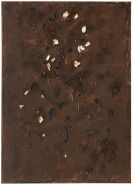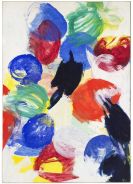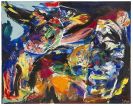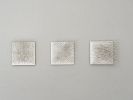
Verner Panton
Gamtofte
1926 -
Kopenhagen
1998
The Danish designer and architect Verner Panton was one of the most innovative of all 20th-century designers, exerting a lasting and far-reaching influence through his sculptural designs, some of them playfully futuristic, and the vividly colored works he designed. Verner Panton attended the Tekniske Skole (Polytechnic) in Odense between 1944 and 1947 before going on to study architecture until 1951 at the Kongelige Danske Kunstakademie (Royal Danish Art Academy) in Copenhagen. From 1950 until 1952 Verner Panton worked in Arne Jacobsen's practice.
In 1955 Verner Panton opened a practice of his own in Copenhagen. In the years that followed, Verner Panton stirred up quite a bit of controversy with his innovative architectural concepts, such as a prefab foldable house (1955), a "Cardboard House" (1957), and a "Plastic House" (1960). Moreover, Verner Panton was active from the 1950s as an interior decorator, exhibition designer, and all-round designer.
Verner Panton broke entirely with convention, designing rooms as landscapes in vibrant color tones, sometimes entirely in shades of red, as in the interior (1958) of "Komigen Kro", a guest house in Langesø on the island of Funen. For this interior, Verner Panton als designed the "Cone" chair. In 1960 he turned it into the "Heart" chair, which also featured a conical foot, and came up with other variations on the original "Cone" that were all made by Plus-Linje.
The unusual way Verner Panton dealt with furnishings and other features of his interiors would become typical of the other interior appointments he designed. His carpet and wallpaper patterns, inspired by Op art, were almost always in vibrant colors. By 1955 Verner Panton had come up with a design for a swing chair made of a single piece of laminated wood, the "S" chair. The "Panton" chair (1959-60) represented a successful translation by Verner Panton of form into plastic materials.
In 1962 the Hermann Miller Company acquired the production rights to the "Panton chair" and it was ultimately made by Vitra for Hermann Miller. The "Panton" chair is one of the earliest chairs made from a single piece of pressure-diecast plastic.
Among Verner Panton's many other, extremely successful designs are the lamps he created for firms such as Louis Poulsen and J. Lüber. In 1960 Verner Panton designed "Moon" (known in the US as "Visor"), with a shade made of movable, interlocking slats, by means of which the light intensity can be adjusted as desired. In 1964 Verner Panton created the "Fun" range in lamps featuring round pieces of nacreous shell. In 1968 Verner Panton the "Flower Pot" lamp and, in 1969, "Ring-Leuchte", meaning "Ring lamp", consisting of an acrylic diffuser printed in color mounted on a rectangular plate of steel. Verner Panton used his lamps in the interiors he designed as modular elements of wall and ceiling decoration, an approach he also used in designing his own house in Basel-Binningen, Switzerland. Later Verner Panton lamps were the 1969 "Kugel-Lampe" ("Ball Lamp") and the entirely futuristic-looking hanging lamp "VP Globe", with the lamp itself encased in a ball of acrylic. In 1969-70 Verner Panton designed seat furniture for the Hermann Miller Company: "Living Tower", consisting of upholstered modules. From 1969 until 1985, Verner Panton also designed textiles printed with geometric patterns for Mira-X, using both Op-art patterns and his signature "rainbow" in vibrant colors.
Would you like to sell a work by Verner Panton?
Infos for seller












